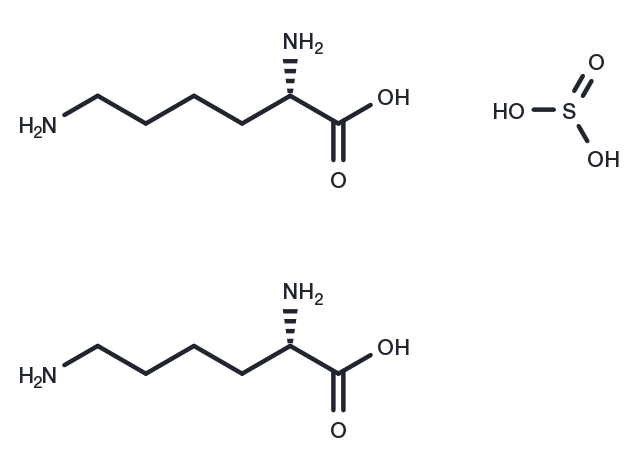Powder: -20°C for 3 years | In solvent: -80°C for 1 year


L-Lysine, sulfite (2:1) is a drug/ therapeutic agent.

| Pack Size | Availability | Price/USD | Quantity |
|---|---|---|---|
| 100 mg | Inquiry | Inquiry | |
| 500 mg | Inquiry | Inquiry |
| Description | L-Lysine, sulfite (2:1) is a drug/ therapeutic agent. |
| Molecular Weight | 187.23 |
| Formula | C6H14N2O2·1/2H2O3S |
| CAS No. | 53411-64-6 |
Powder: -20°C for 3 years | In solvent: -80°C for 1 year
You can also refer to dose conversion for different animals. More
bottom
Please see Inhibitor Handling Instructions for more frequently ask questions. Topics include: how to prepare stock solutions, how to store products, and cautions on cell-based assays & animal experiments, etc.
L-Lysine, sulfite (2:1) 53411-64-6 2:1 LLysine, sulfite (2:1) L-Lysine, Sulfite L Lysine, sulfite (2:1) inhibitor inhibit
